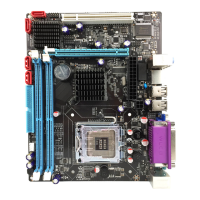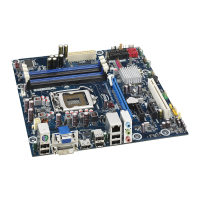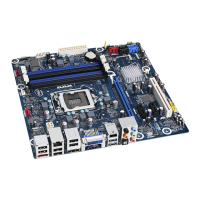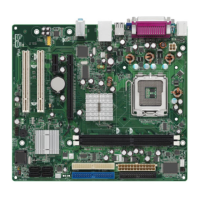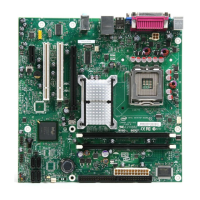Intel Desktop Board CA810E Product Guide
16
USB Support
The desktop board has two USB ports. You can connect two USB peripheral devices directly to
the computer without an external hub. To attach more than two devices, connect an external hub
to either of the built-in ports. The desktop board supports the standard universal host controller
interface (UHCI) and uses standard software drivers written to be compatible with UHCI.
✏
NOTE
Computer systems that have an unshielded cable attached to a USB port may not meet FCC
Class B requirements, even if no device or a low-speed USB device is attached to the cable. Use a
shielded cable that meets the requirements for a full-speed USB device.
Expansion Slots
The desktop board has four PCI expansion slots.
Battery
A battery on the desktop board keeps the clock and the values in CMOS RAM current when your
computer is turned off. See Chapter 2 for instructions on how to replace the battery.
BIOS
The BIOS includes the POST, the BIOS Setup program, the PCI and IDE auto-configuration
utilities, and the video BIOS.
To upgrade the BIOS, see Chapter 3.
PCI Auto Configuration
If you install a PCI add-in board in your computer, the PCI auto-configuration utility in the BIOS
automatically detects and configures the resources (IRQs, DMA channels, and I/O space) for that
add-in board. You do not need to run the BIOS Setup program after you install a PCI add-in
board.
IDE Auto Configuration
If you install an IDE device (such as a hard drive) in your computer, the IDE auto-configuration
utility in the BIOS automatically detects and configures the device for your computer. You do not
need to run the BIOS Setup program after installing an IDE device.

